
Camel
Camel
Camel
A camel with a large hump on its back and gentle eyes with long eyelashes. The hump, long eyelashes, and large body of this camel conceal the amazing wisdom and history that has evolved to survive harsh environments.
Camel Basic Infomation
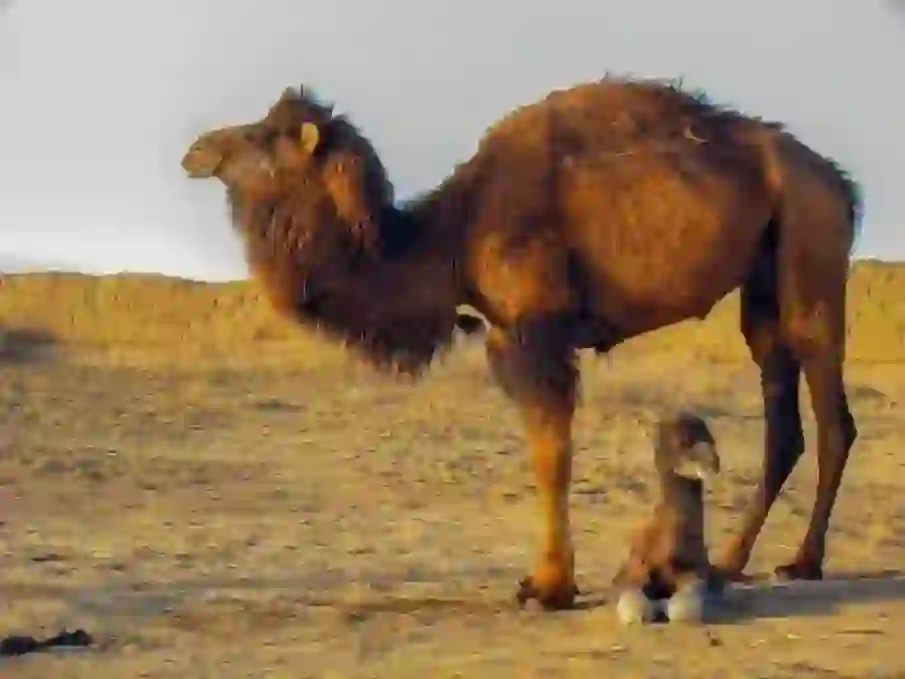
Camels have mechanisms that allow them to live in deserts and wastelands. Although their hooves are small and they have only two toes, their feet have large, soft, flat pads (soles) that act like cushions so they can walk skillfully without sinking into the sand of the desert.
Camels’ long double eyelashes and bushy eyebrows protect their eyes from sandstorms in the desert. Also, the reason why camels’ eyes are blurry is because the mucus that protects their eyes from drying out covers their eyes. This mucus contains fat, so it is difficult for moisture to evaporate even in dry places like deserts. In addition, camels have a rare “nictitating membrane” in their eyes among mammals. This transparent membrane opens and closes left and right and acts like goggles.
Camels’ noses and ears are also impervious to sandstorms in the desert. Like their long eyelashes, their ear hair and nose hair are long and prevent sand from getting in. In addition, camels’ noses can open and close freely. When a violent sandstorm occurs, it closes tightly to shut out the dust. That’s why camels are okay even in violent sandstorms.
Camels have thick, hardened skin called calluses on their bodies. These are located at the base of the left and right front legs, the knees of the hind legs, and five places on the chest. When camels sit on hot desert sand, they sit on these five points. Calluses are excellent insulators, so if you sit on them and touch the ground, you can sit and rest comfortably on hot desert sand that has been heated to high temperatures.
Camels’ noses can open and close freely, which also helps conserve water. By closing their noses, they not only prevent precious water from escaping but also recover some of the moisture from their exhaled breath. This is done by the many folds of mucous membranes in the nose and back of the nose. When these folds expand, the surface area exposed to air increases. When air is drawn in there, the moisture in the mucous membrane evaporates and cools down. When moist breath from the lungs passes through the cooled mucous membrane, it condenses on the cooled mucous membrane and is collected. In addition, camels have liver and kidney functions that are different from those of other animals and can filter urine and recycle it. Therefore, camel urine is more concentrated than that of other animals. Furthermore, camels can drink water with a high salt concentration. By not letting necessary water escape and using as much available water as possible, camels can survive even if they lose 30% to 40% of their body’s water content.
How do camels hydrate in the desert? In fact, camels can drink a lot of water at once. And excess water is stored in the blood. In normal animals, too much water in the blood causes red blood cells to burst. But camels are okay! Camel red blood cells can swell up to about twice their normal size without bursting.
In addition, camels have mechanisms that prevent water loss from their bodies. Although the normal body temperature of a camel is about 36°C, it can regulate its body temperature from 34°C to 40°C. This temperature regulation also plays a role in preventing water loss. When the temperature is high, they store heat and raise their body temperature to prevent sweating and lose water. They can withstand the heat without losing water. On cold desert nights, they release heat and lower their body temperature to keep warm. That’s why they can survive in the desert with extreme temperature differences.
And speaking of camels, there are humps on their backs! If you touch them when you ride a camel at the zoo, you’ll find that they’re soft and squishy. Actually, the contents of a camel’s hump are fat. When the humps are full, they contain nearly 50 kg of fat. This fat is made by eating food and accumulating calories. Since this fat can be converted into energy, camels can survive for four to five months without food when their humps are full. Amazing!
Camel Q&A

The first camel was about the size of a rabbit.
The ancestors of camels appeared in North America about 45 million years ago and were animals about the size of rabbits. Later, there were two groups: one group that grew larger to withstand the cold as North America headed towards colder times, and another group that moved to South America to avoid the cold. Some of the larger group crossed the Bering land bridge (a road connecting two continents when the current Bering Strait was land) about 2-3 million years ago and moved to Eurasia. This camel evolved into the current camel.
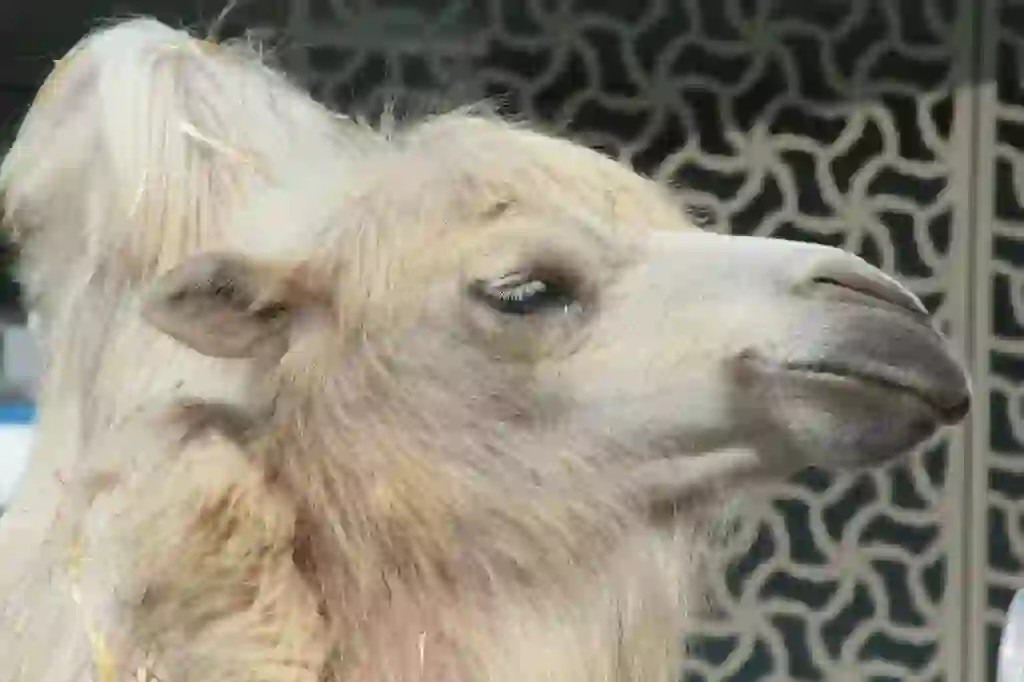
Alpacas and llamas were relatives of camels!
The group that moved to South America to avoid the cold and survived are four related species: llamas, alpacas, guanacos, and vicunas. By the way, although their size and hump presence are different, they have similarities with camels. So what happened to the camels that remained in North America? In fact, the camels that remained in North America disappeared at the same time as the first humans migrated to North America about 12,000-10,000 years ago when the ice age ended. The reason for their extinction is thought to be due to being hunted by humans or not being able to adapt to environmental changes, but the exact reason is unknown.
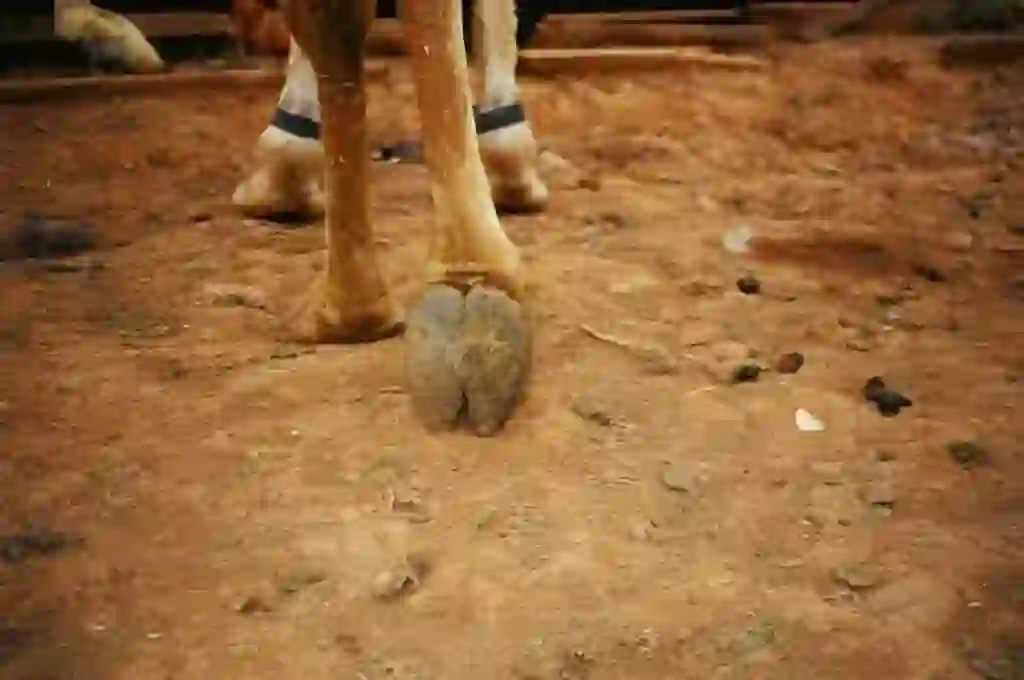
Camel paws and cute eyes also have meaning!
Camels have mechanisms that allow them to live in deserts and wastelands. Although their hooves are small and they have only two toes, their feet have large, soft, flat pads (soles) that act like cushions so they can walk skillfully without sinking into the sand of the desert.
Camels’ long double eyelashes and bushy eyebrows protect their eyes from sandstorms in the desert. Also, the reason why camels’ eyes are blurry is because the mucus that protects their eyes from drying out covers their eyes. This mucus contains fat, so it is difficult for moisture to evaporate even in dry places like deserts. In addition, camels have a rare “nictitating membrane” in their eyes among mammals. This transparent membrane opens and closes left and right and acts like goggles.
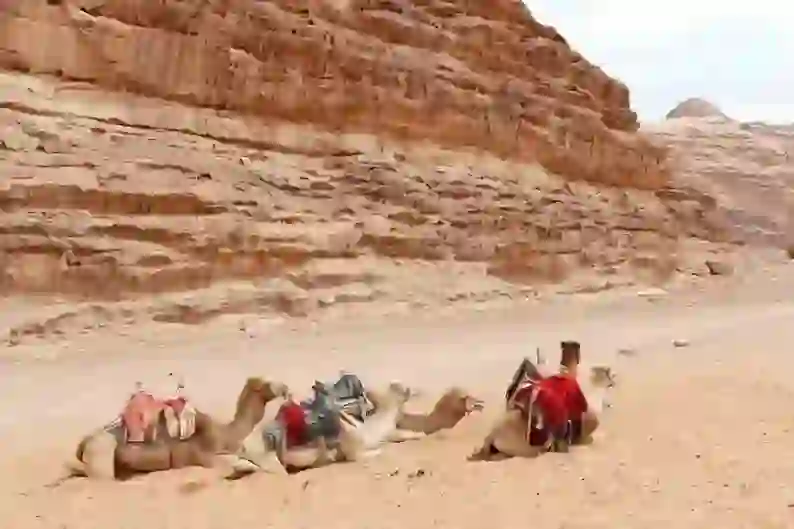
Nose and ears are not afraid of desert sandstorms!
Camels’ noses and ears are also impervious to sandstorms in the desert. Like their long eyelashes, their ear hair and nose hair are long and prevent sand from getting in. In addition, camels’ noses can open and close freely. When a violent sandstorm occurs, it closes tightly to shut out the dust. That’s why camels are okay even in violent sandstorms.
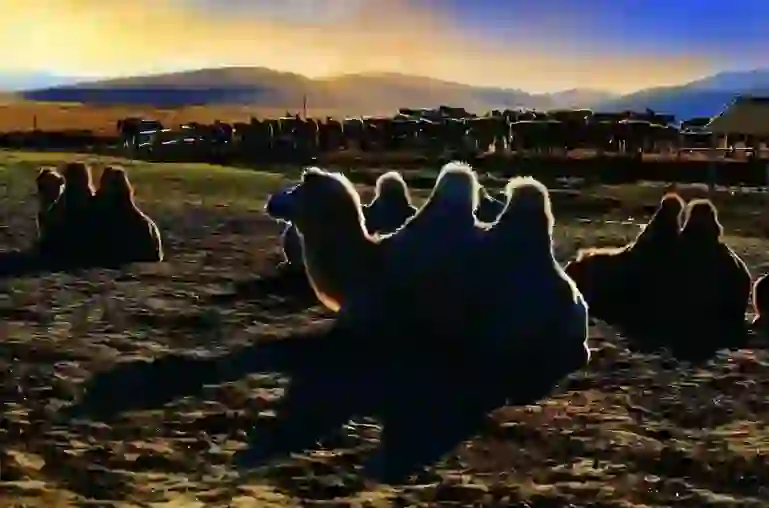
Camels don't mind sitting on the hot sand of the desert!
Camels have thick, hardened skin called calluses on their bodies. These are located at the base of the left and right front legs, the knees of the hind legs, and five places on the chest. When camels sit on hot desert sand, they sit on these five points. Calluses are excellent insulators, so if you sit on them and touch the ground, you can sit and rest comfortably on hot desert sand that has been heated to high temperatures.
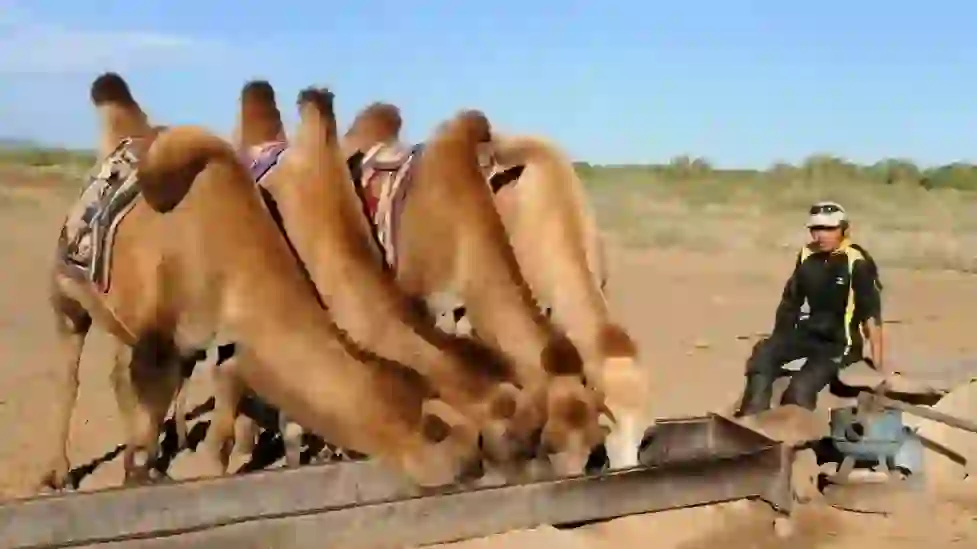
Camels have an eco-friendly body that also reuses the water in their bodies.
Camels’ noses can open and close freely, which also helps conserve water. By closing their noses, they not only prevent precious water from escaping but also recover some of the moisture from their exhaled breath. This is done by the many folds of mucous membranes in the nose and back of the nose. When these folds expand, the surface area exposed to air increases. When air is drawn in there, the moisture in the mucous membrane evaporates and cools down. When moist breath from the lungs passes through the cooled mucous membrane, it condenses on the cooled mucous membrane and is collected. In addition, camels have liver and kidney functions that are different from those of other animals and can filter urine and recycle it. Therefore, camel urine is more concentrated than that of other animals. Furthermore, camels can drink water with a high salt concentration. By not letting necessary water escape and using as much available water as possible, camels can survive even if they lose 30% to 40% of their body’s water content.

Camels store water in their red blood cells.
How do camels hydrate in the desert? In fact, camels can drink a lot of water at once. And excess water is stored in the blood. In normal animals, too much water in the blood causes red blood cells to burst. But camels are okay! Camel red blood cells can swell up to about twice their normal size without bursting.
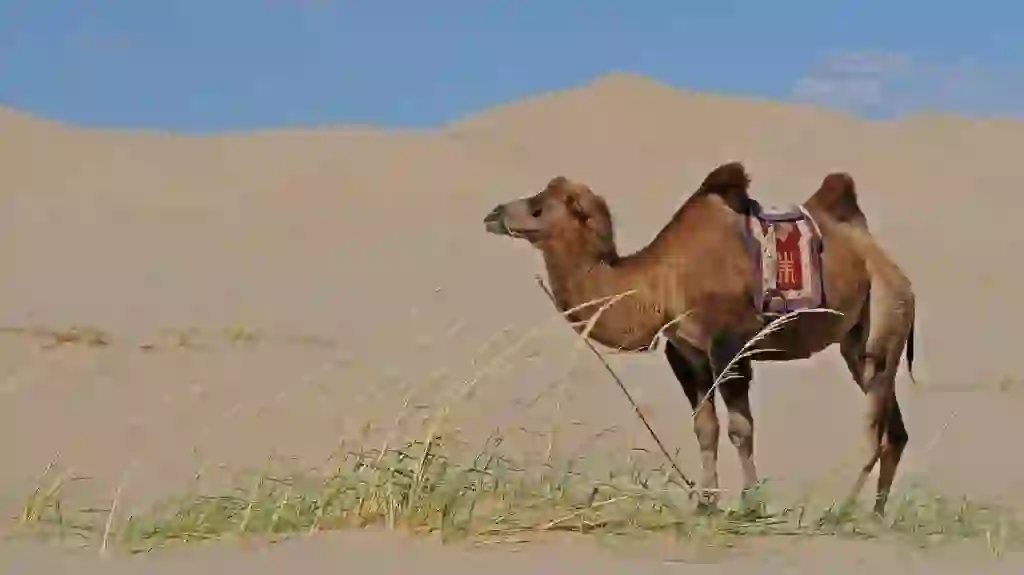
Camels do not sweat.
In addition, camels have mechanisms that prevent water loss from their bodies. Although the normal body temperature of a camel is about 36°C, it can regulate its body temperature from 34°C to 40°C. This temperature regulation also plays a role in preventing water loss. When the temperature is high, they store heat and raise their body temperature to prevent sweating and lose water. They can withstand the heat without losing water. On cold desert nights, they release heat and lower their body temperature to keep warm. That’s why they can survive in the desert with extreme temperature differences.
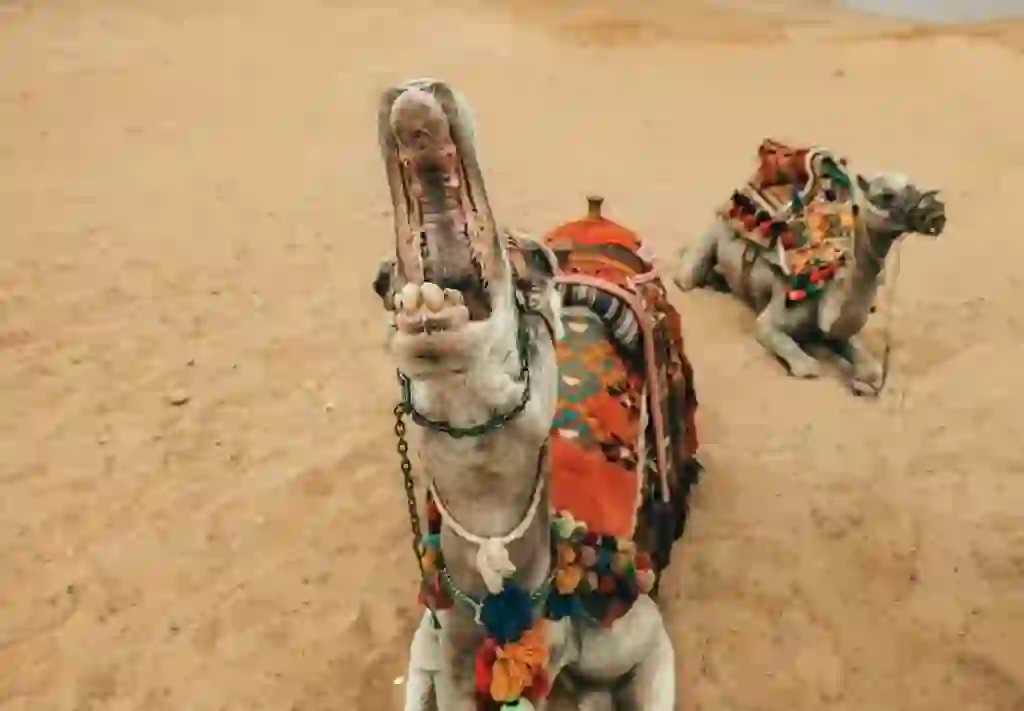
The camel's hump is squishy.
And speaking of camels, there are humps on their backs! If you touch them when you ride a camel at the zoo, you’ll find that they’re soft and squishy. Actually, the contents of a camel’s hump are fat. When the humps are full, they contain nearly 50 kg of fat. This fat is made by eating food and accumulating calories. Since this fat can be converted into energy, camels can survive for four to five months without food when their humps are full. Amazing!
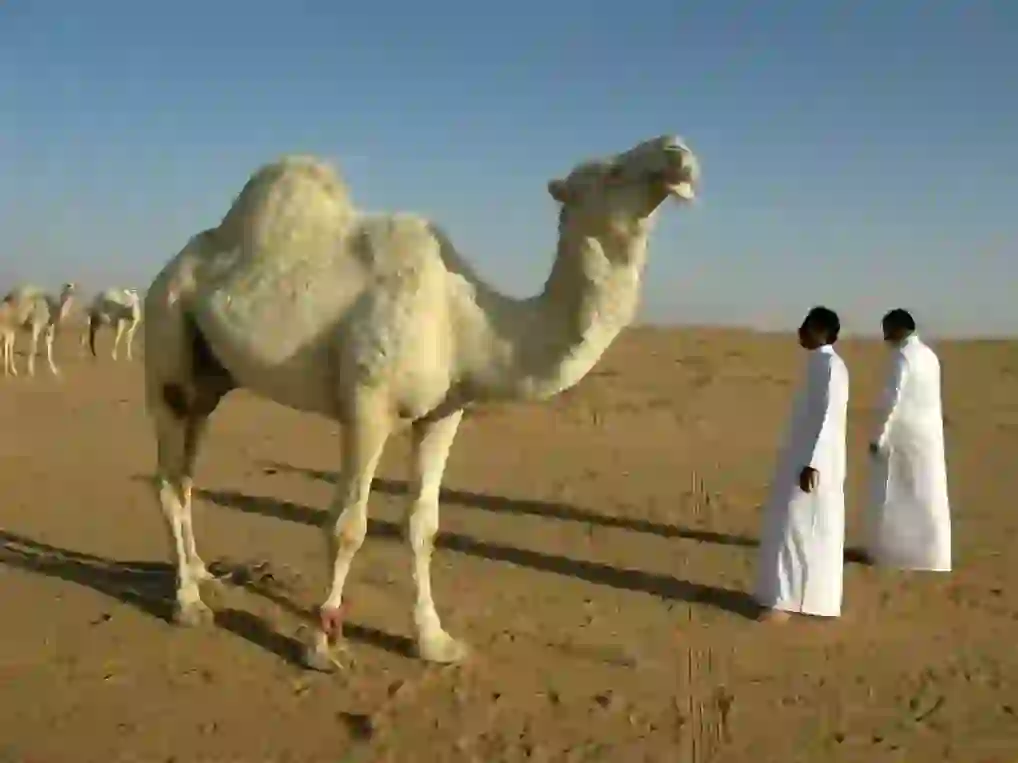
Where does the camel get its name?
In English, it’s called “Camel,” but in Japanese, it’s called “rakuda.” This time, I’ll introduce you to the origin of why it’s called “rakuda” in Japanese. There are various theories about the origin of the name “rakuda,” but the theory that it comes from the Chinese name “rakuda” and its formal name “takuda” is considered to be the most likely. “Taku” means bag and “da” means animal, meaning “an animal that carries baggage.” It is believed that this sound of “takuda” was transformed into “rakuda.”
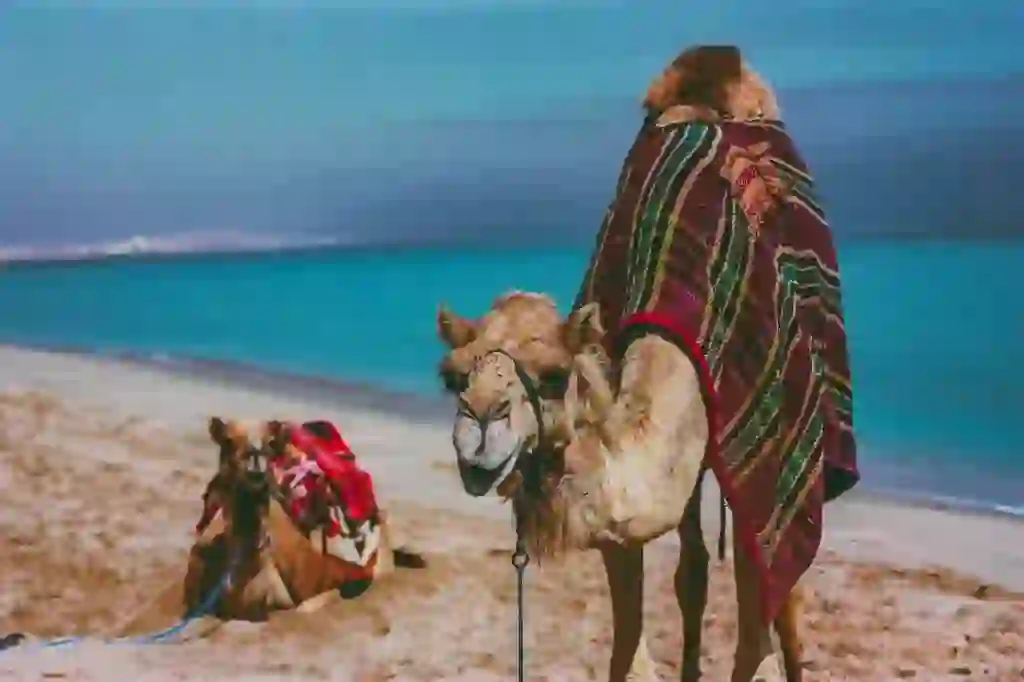
Why do camels live there?
Camels live in regions with dry climates such as desert and steppe climates. Dromedaries are native to West Asia and live in India, Iran, and Africa. Bactrian camels are native to Central Asia and live in Turkey, Iran, and Mongolia. Camels have evolved to survive in harsh natural environments such as deserts, but they cannot survive in humid climates. Their feet are not suitable for walking on wetlands, and they have no resistance to infectious diseases that are common in humid climates.
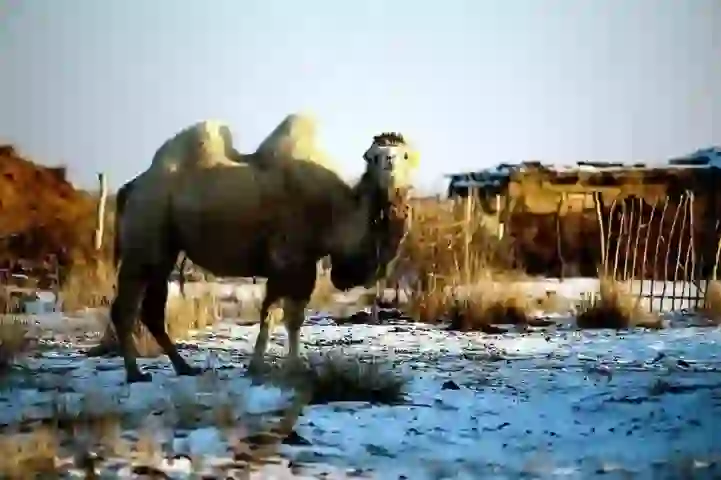
What do camels eat?
Wild camels mainly eat leaves and grasses, beans, corn, and other foods, but they also eat cacti with thorns. Eating cacti sounds painful, doesn’t it? Camels in captivity, such as those in zoos, eat hay, leaves of trees, vegetables such as carrots, bread, pellets, and so on.
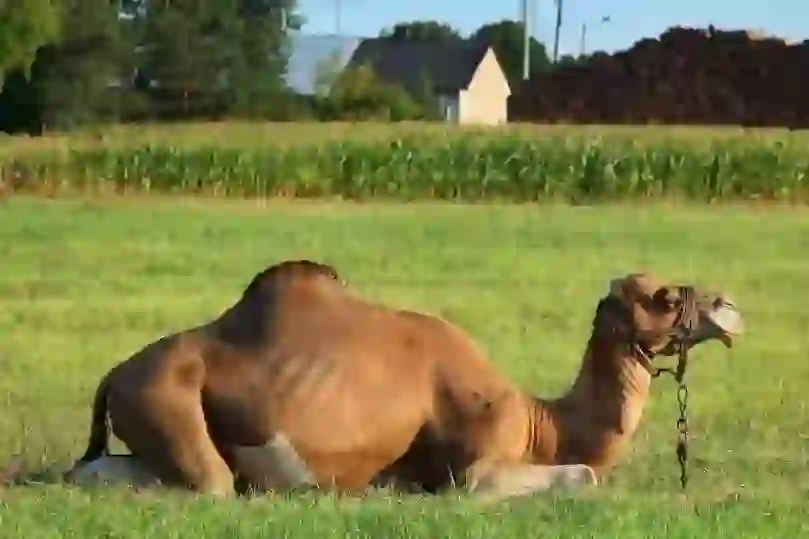
Is it OK for camels to eat cacti?
Yes. Camels have mouths that can eat cacti without any problems. Camels use their large, hard lips to carry cacti into their mouths and press them against their hard upper jaws, grinding them with their teeth. In addition, there are many conical protrusions called papillae in the camel’s mouth. They use these papillae to align the food in one direction and flow it into the stomach so that the thorns do not stick. Some of these papillae are made of the same hard substance “keratin” as human nails. Thanks to this, camels can eat cacti.
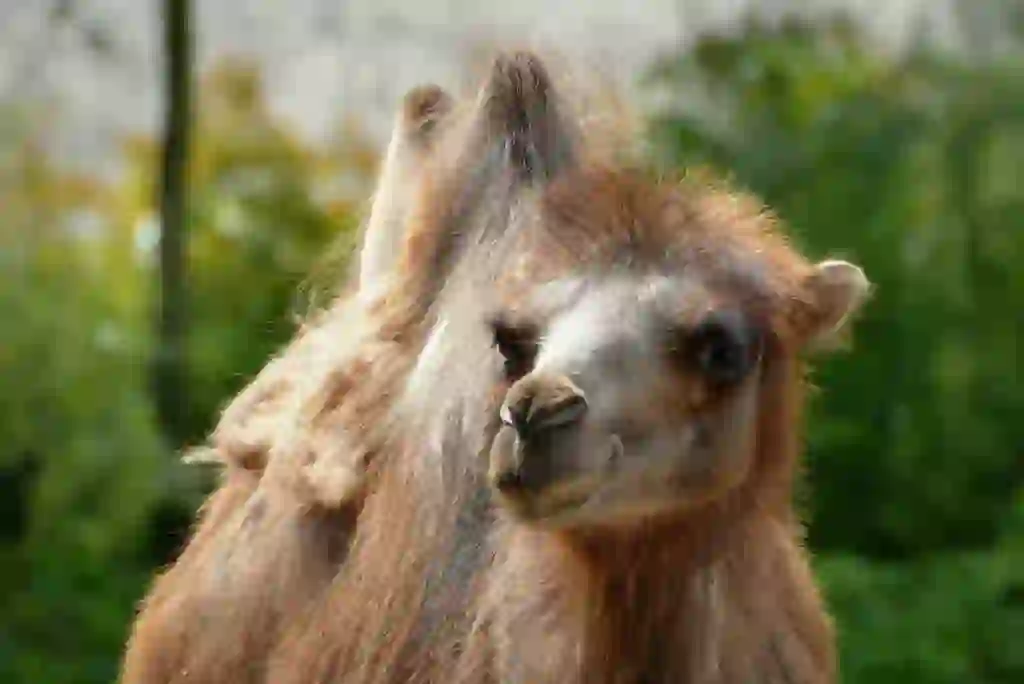
There is a rumor that camels have stomachs out of their mouths, but is it true?
Some people may have seen pictures of camels that appear to be spitting out large pink bags from their mouths. But it’s not their stomachs, organs, or tongues. This is the part of the throat behind the “palate,” and camels sometimes inflate it and spit it out of their mouths when they are in heat or excited.
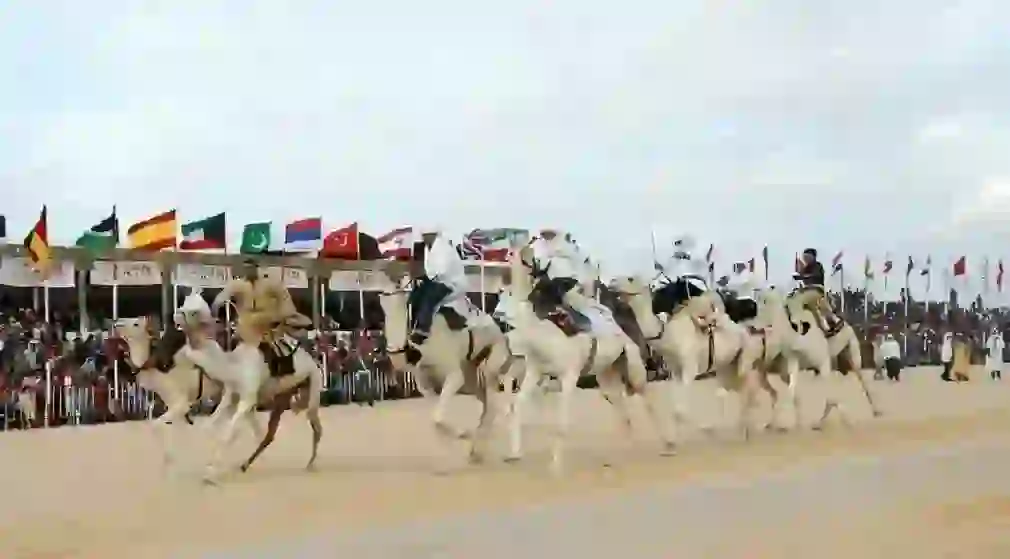
When did camels start to be kept by humans?
It is believed that the dromedary was domesticated in Arabia, probably before 2000 BC or between 4000 BC and 1300-1400 BC. After that, it spread from Arabia to North Africa, East Africa, and other regions. The Bactrian camel is believed to have been domesticated around 2500 BC in the region from northern Iran to southwestern Turkestan and then spread to Iraq, India, and China.

How heavy can a camel carry?
Camels can carry 200-500 kg of cargo per head. Moreover, camels can carry heavy loads and walk in dry areas where other animals cannot go. Therefore, especially in the Arab world, camels have been used as an important means of transportation and have been called “ships of the desert” and “gifts from God” until cars became popular.
In addition, even today, in the Republic of Mali in Africa, a caravan of 2,000 to 3,000 camels carries salt from “Taoudenni” across the desert for a total of 1,500 km round trip over 40 days.

Are there wild camels?
Wild dromedaries have become extinct. However, domesticated dromedaries have escaped and become feral in remote areas of Australia and China. Wild Bactrian camels still exist, but there are only about 1,000 left in the world and they are classified as endangered species.
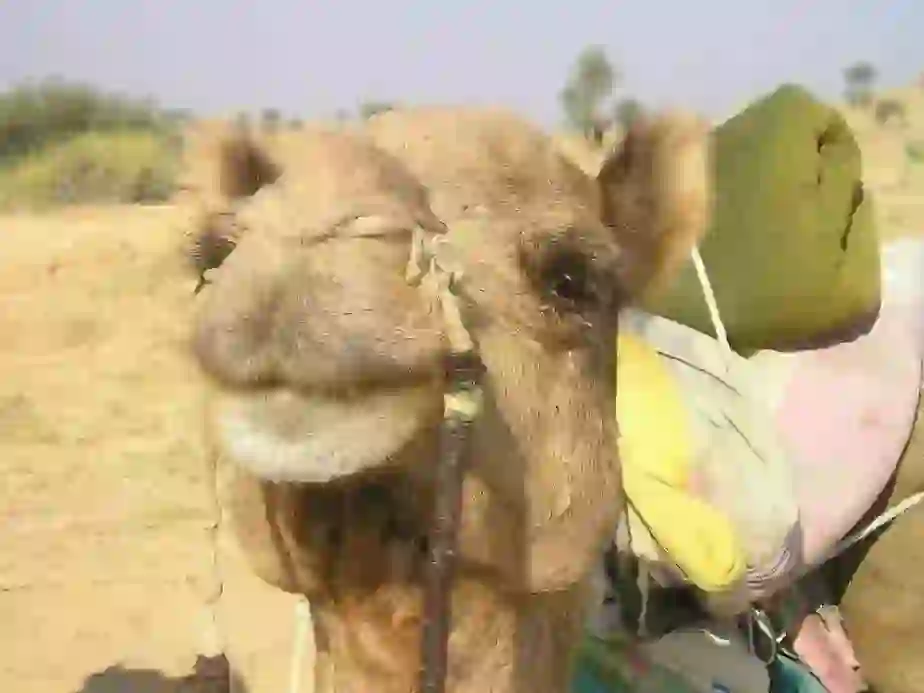
How long does a camel live?
The lifespan of a semi-wild dromedary is 30-40 years, while that of a captive dromedary is about 40-50 years. The lifespan of a Bactrian camel is about 20-30 years, but they can live for almost 40 years. Dromedaries live longer than Bactrian camels.

What kind of sound is a camel make?
Camels have a loud, resonant voice that sounds like grunt.

How fast can a camel run?
Camels can run at speeds of 40-60 km/h. In the Arabian Peninsula and Australia, there is a race called “camel racing,” which is a competition between dromedaries. They compete for position by circling a desert course of about 10 km, longer than horse racing. It’s amazing that they can run at such high speeds like cars in the desert over long distances.

Would you like to become a part of the 'Animalbook.jp'?
Turn your knowledge into Q&A and share it with the world. ※Publication will be activated after purchase. Let's share information together!
Camel Type of List
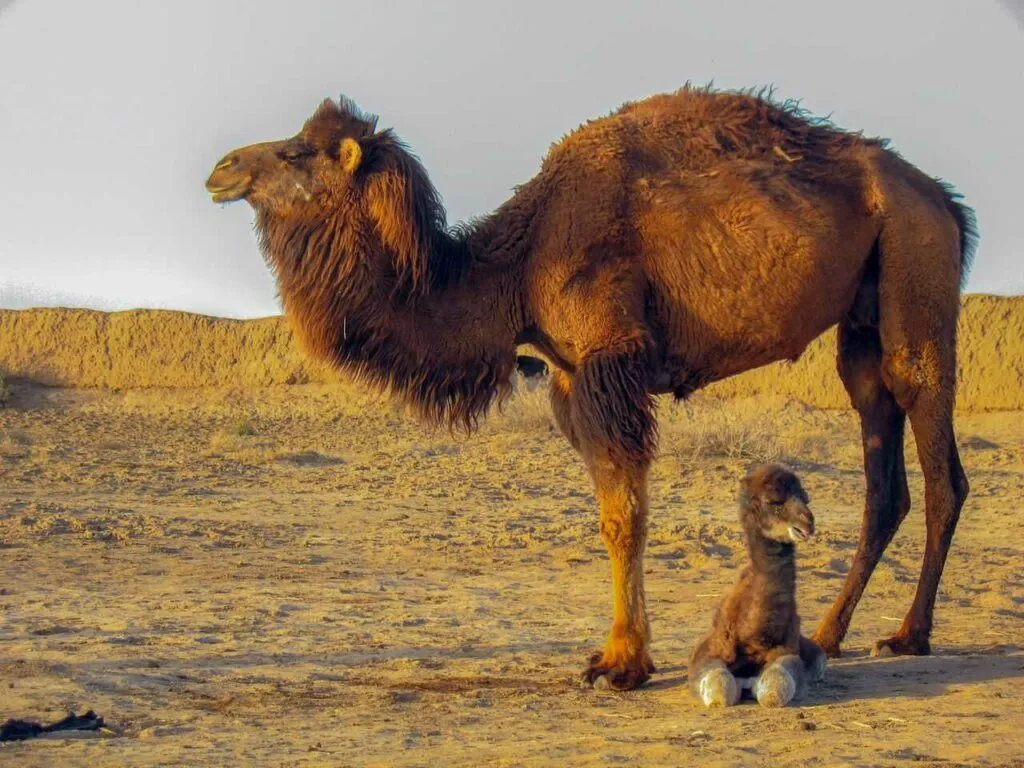
- Camelus. ・Dromedary. ・Wild Bactrian camel. ・Bactrian camel.
- Extinct species. ・Camelus gigas. ・Camelus hesternus. ・Camelus sivalensis.
Information
Congratulations! You are the first commenter!

Create Your Favorite List!
Camel
Save the animals you love! Build your own list to quickly revisit your favorites later.

Would you like to leave a comment?
※Please note: This is for the purchase of rights to post comments within the article.
Find Your Favorites!
Our shop offers a unique and attractive selection of goods themed around various animals.
Camel References

- wikipedia フリー百科事典 ラクダ https://ja.wikipedia.org/wiki/ラクダ
- weblio辞書 https://www.weblio.jp/wkpja/content/ラクダ_牧畜
- 横浜ズーラシア http://www.hama-midorinokyokai.or.jp/zoo/zoorasia/details/post-2411.php
- アニマル雑貨けものやさん http://kemonoyasan.web.fc2.com/ar0camelidae01.html
- ナショナルジオグラフィック 動物図鑑
- 名古屋学院大学論集/ユーラシア大陸におけるラクダ科動物の家畜化jinbun_vol5402_05.pdf
- 雑学カンパニー https://zatsugaku-company.com/camel-eyelids-triple/
- 水知識 砂漠に生きるラクダの生態 https://www.aquas5.com/knowledge/30/001335.php
- ナゾロジー https://nazology.net/archives/72152
- キッズネット https://kids.gakken.co.jp/kagaku/kagaku110/science0142/
- ログミーBiz https://logmi.jp/business/articles/323104
- サントリー 水大辞典 https://www.suntory.co.jp/eco/teigen/jiten/science/08/
- 地質ニュース ラクダと石 https://www.gsj.jp/data/chishitsunews/04_11_09.pdf)
- 写真でイスラーム https://mphot.exblog.jp/920365/
- pet pedia ひとこぶらくだ.com https://petpedia.net/article/425/camel
Camel Introduction of media used
出典:https://pixabay.com/videos/id-7612/

出典:https://unsplash.com/photos/v6wFUMDiTgo

other
写真提供:「ひとこぶラクダ.com」様 この画像は、著作者に掲載許可をいただいたものです。許可なく転載することを禁止します。

出典:https://pixabay.com/images/id-1635848/

出典:https://pixabay.com/images/id-351/

出典:https://pixabay.com/images/id-4134851/

出典:https://pixabay.com/images/id-5227498/

出典:https://pixabay.com/images/id-692646/

出典:https://pixabay.com/images/id-110663/

出典:https://pixabay.com/images/id-110663/

出典:https://unsplash.com/photos/40-GOluPlWA

出典:https://pixabay.com/images/id-95500/

出典:https://unsplash.com/photos/Trr05sEiewU

出典:https://pixabay.com/images/id-3073851/

出典:https://pixabay.com/images/id-4267480/

出典:https://pixabay.com/images/id-824895/

出典:https://pixabay.com/images/id-733614/

Help Enrich Our Animalbook.jp with Your Media!
We are constantly looking to expand and enrich our Animalbook.jp with amazing photos and videos of animals. If you have any media that you'd like to share, please contribute and help us showcase the beauty and diversity of the animal kingdom. Your submissions will be credited and featured in our encyclopedia, reaching a wide audience of animal lovers.


















